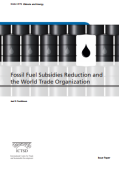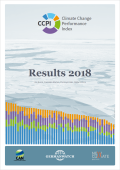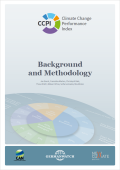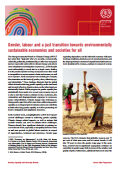
The paper Fossil Fuel Subsidies Reduction and the World Trade Organization develops the contours of an ambitious approach to fossil fuel subsidy reform using the multilateral trade system.

For the past 13 years, the Climate Change Performance Index (CCPI) has been keeping track of countries’ efforts in combating climate change. The varying initial positions, interests and strategies of the numerous countries make it difficult to distinguish their strengths and weaknesses and the CCPI has been an important tool in contributing to a clearer understanding of national and international climate policy.

The Climate Change Performance Index is an instrument designed to enhance transparency in international climate politics. Its aim is to put political and social pressure on those countries which have, up until now, failed to take ambitious action on climate protection.

Der Klimaschutz-Index ist ein Instrument, das mehr Transparenz in die internationale Klimapolitik bringen soll. Ziel ist es einerseits, den politischen und zivilgesellschaftlichen Druck auf diejenigen Länder zu erhöhen, die bisher noch keine ehrgeizigen Maßnahmen zum Klimaschutz ergriffen haben, und andererseits Länder mit vorbildlichen Politikmaßnahmen herauszustellen.

The publication Gender, Labour and a Just Transition Towards Environmentally Sustainable Economies and Societies for All highlights how a just transition with inclusive climate action can play a strong role in transforming gender norms and furthering gender equality.
